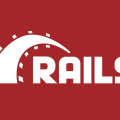Django vs. Rails in 2019 (hint: there is a clear winner)
I recently had the opportunity to work on a production application in the Django framework. I had previously worked with the framework (version 1.4) at a tech startup circa 2012, but hadn’t revisited it in several years. I feel like I can provide a more comprehensive, in-depth comparison than many can in that I have worked professionally with both frameworks (and at their current release versions) how to make a pay stub. I am a bit stunned by how much Django has fallen behind in dimensions such as its broad state of maturity, community/ecosystem, productivity and much more and even improving business management. I wanted to do a post enumerating these points, both in the hopes that it can help others deciding between these two frameworks.
tl;dr – in 2019, unless you have some critical dependency on a Python library and you cannot work around it with a service-wise integration, just choose Rails.
Without further ado, here is a point-by-point assessment of Django in relation to Ruby on Rails in 2019:
1) No intelligent reloading
This might seem an odd place to start but it is to me actually very important and symbolic of the broader state of the Django framework and its comparative stagnation over the past decade. Django’s development server, by default, entirely reloads your project when you modify a file. Django’s default shell (and indeed, even the extended shell_plus) expose no faculty at all for you to reload modified code – you must manually exit and restart them after any relevant code change, have a look at what salary payment is. This is in contrast to Rails’ intelligent class loading, which has been a feature of the framework for over a decade and continues to see optimization and refinement (such as with the introduction of Xavier Noria’s Zeitwerk into Rails 6). Modifying a file in development causes only the implemented class to be reloaded in the runtime of the development server, and even an active REPL can be manually updated with the new class implementation with a call to the globally-exposed reload! method, have a look at why using a check stub maker to create paylips will make your company run smoothly.
2) Dependency management
Rails directly integrates bundler as a solution for dependency management cost reduction. When you pull down a Rails project to work on, you will find all explicit dependencies declared in the Gemfile in the project root, and a full hierarchical dependency graph in the Gemfile.lock. Furthermore, because the framework is bundler-aware, dependencies are able to hook directly into your application with sensible defaults using the faculties provided by Railties, and without any needless boilerplate.
Meanwhile, Django’s guide does not even broach the topic of dependencies. In my experience, most projects rely on Virtualenv, pip and a requirements.txt file, while a small number rely instead on setuptools and a setup.py file.
I don’t have much experience with the setup.py-based approach but as for the Virtualenv +requirements.txt approach, there are some major shortcomings:
- Dependencies are not environment-specific (i.e. there is no equivalent of bundler groups). This makes it much more of a chore to prevent test or development environment dependencies from bloating your production deployment. Perhaps it is possible to manage per-environment dependencies by using several different requirements files, but I have never tried and I imagine this would prove a chore when switching from a “development” to “testing” context, for instance, while working on a project.
- Dependency file is flat, not hierarchical – you cannot easily see which package is a dependency of which, making it difficult to prune old dependencies as your project evolves (though there is a third-party tool that can help here).
- Because the framework lacks direct integration with the dependency management tool, and lacks a system of hooks like Railties, there is always tedious boilerplate left for you to write whenever you integrate a third-party library (“app”) with your own Django project.
3) I18n and localization
Rails has an extremely mature and pragmatic internationalization (I18n) and localization framework. If you follow the framework’s documentation and use it’s t (translate) and l (localize) in the appropriate places, your application will be, by default, internationalization and localization ready in a very deep way.
Rails’ I18n and localization faculties are pragmatic to a degree that I have not seen, in fact, in any other web application framework (nor framework for other platforms, for that matter). I18n/localization in Rails works with a Thread-local pseudo-global I18n.locale attribute. What this means is that, with a single assignment such as I18n.locale = :de, values application-wide (for your current thread) will be seamlessly translated. This comes extremely useful in contexts such as background jobs or emails, where you can simply have some code like this and have things seamlessly rendered in the correct language and with correct localizations (i.e. proper date/time formatting, inflections, etc):
|
1 2 3 4 5 6 |
I18n.with_locale(@user.locale) do mail( to: @user.email, subject: I18n.t('.subject') ) end |
Django’s translation framework similarly depends on a thread-local configuration (translation.activate('(locale code)')), but is built atop gettext, a translation framework that I would argue is significantly less practical.
Whereas in Rails, you can do something like t('.heading') from a template app/views/users/profile.html.erb and the framework will know to pull the translation with the key users.profile.heading, the analogous translation call in Django would be something like:
|
1 2 3 |
{% load i18n %} {% trans 'Welcome to your profile' %} |
Translations are managed in rigid “.po” (“portal object”) files:
|
1 2 3 |
#: profile.html:3 msgid "Welcome to your profile" msgstr "Welcome to your profile" |
But there is much, much more to distinguish Rails I18n/localization faculties over those of Django. Django’s translation framework is not at all dynamic/context-aware. This means that the framework will fail to cope, in any seamless way, with more complex pluralization rules like those of Slavic and Arabic languages, which are reasonably accommodated by Rails more dynamic localization scheme.
4) ActiveSupport
ActiveSupport is a library of utilities that, for practical purposes, can be thought of as an extension of the Ruby standard library. The breadth of these utilities is extensive, but they all evolved from a sense of pragmatism on the part of Rails’ maintainers. They include, for instance, things such as a String#to_sentence utility, which lets you do things like:
|
1 2 |
> "This project supports #{@payment_methods.pluck(:name).to_sentence}." # => "This project supports Credit Card, PayPal and Bank Transfer" |
ActiveSupport also includes extensive data/time related utilities (and operator overloads/core type extensions) that allow for intuitive expression of date/time related calculations:
|
1 2 3 |
old_time = 1.year.ago older_time = 1.year.ago - 15.days @old_posts = Post.where('created_at < ?', older_time) |
5) Far less mature asset management
6) Less mature caching faculties
7) Less flexible, more boilerplate-heavy ORM
8) Impractical migration framework
9) Management Commands vs Rake Tasks
10) No assumption of multiple environments
11) No credential encryption
12) Less mature ecosystem (as concerns PaaS, etc)
13) Boilerplate, boilerplate, boilerplate (as concerns absence of autoloading, Railties, etc).
14) Missing Batteries (Mailer Previews, ActiveJob, Parallel Testing etc)
15) Philosophy
i.e. think of “constraints are good” (i.e. the extremely limited template language in Django), “explicit is better than implicit” (as opposed to “convention over configuration”). I think explicit over implicit as a knock on Rails really misses the point. Everything “implicit” is actually just configuration of an extremely well-documented system. Ask any Rails developer of even modest experience about “magic” and they will tell you that there isn’t any magic in the framework. A lot of the things that people coming from other backgrounds might cite as magic in a “hot take” are really just instances of pragmatic API design (and where the underlying implementation is actually wholly comprehensible and often very well-documented to boot).












No Comments